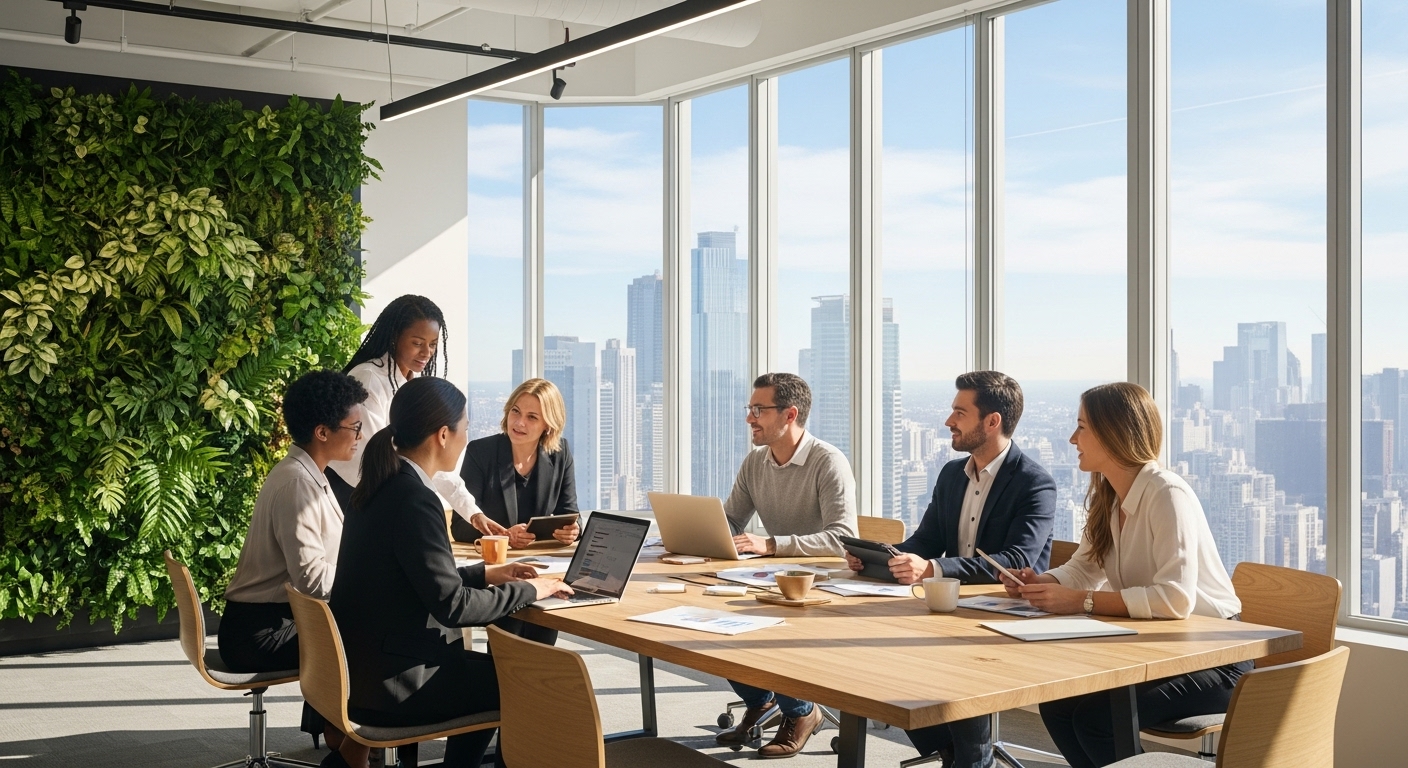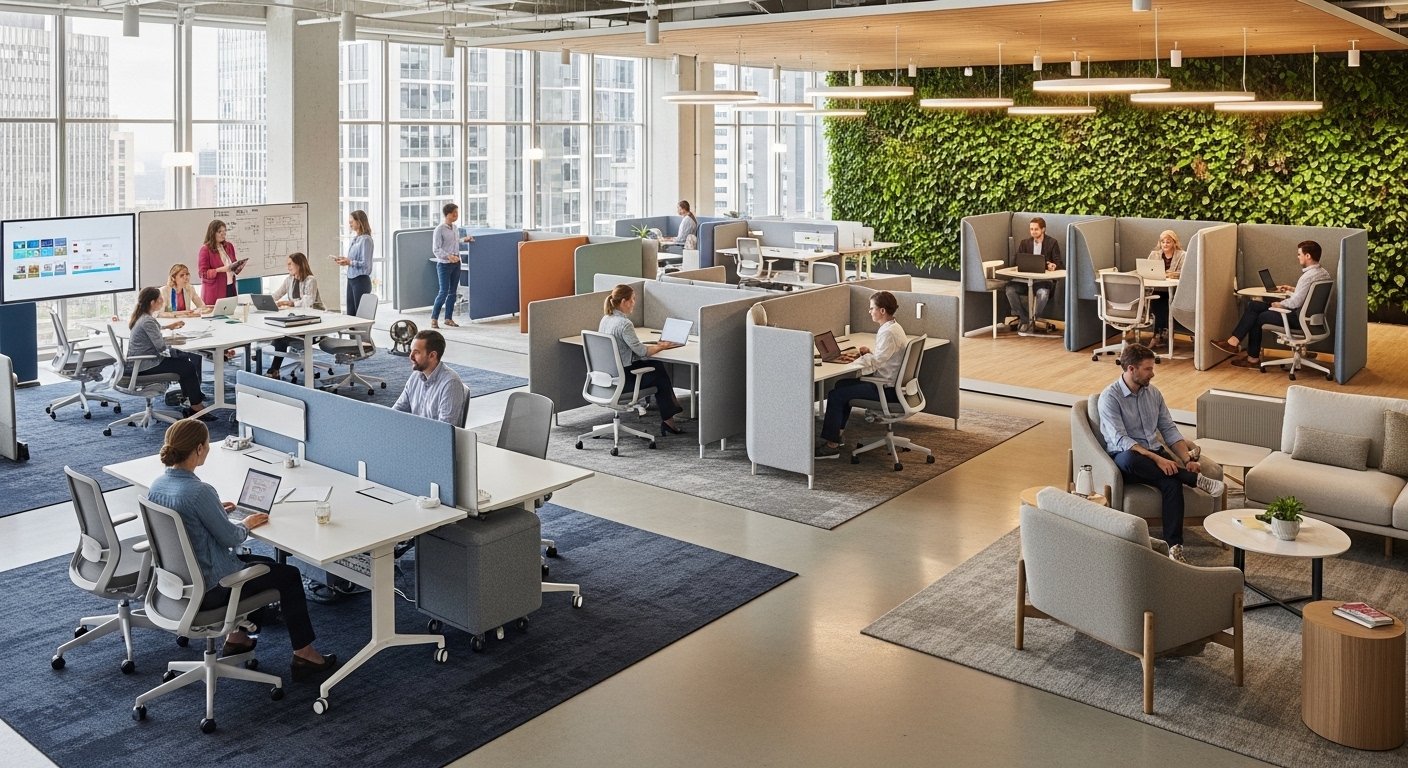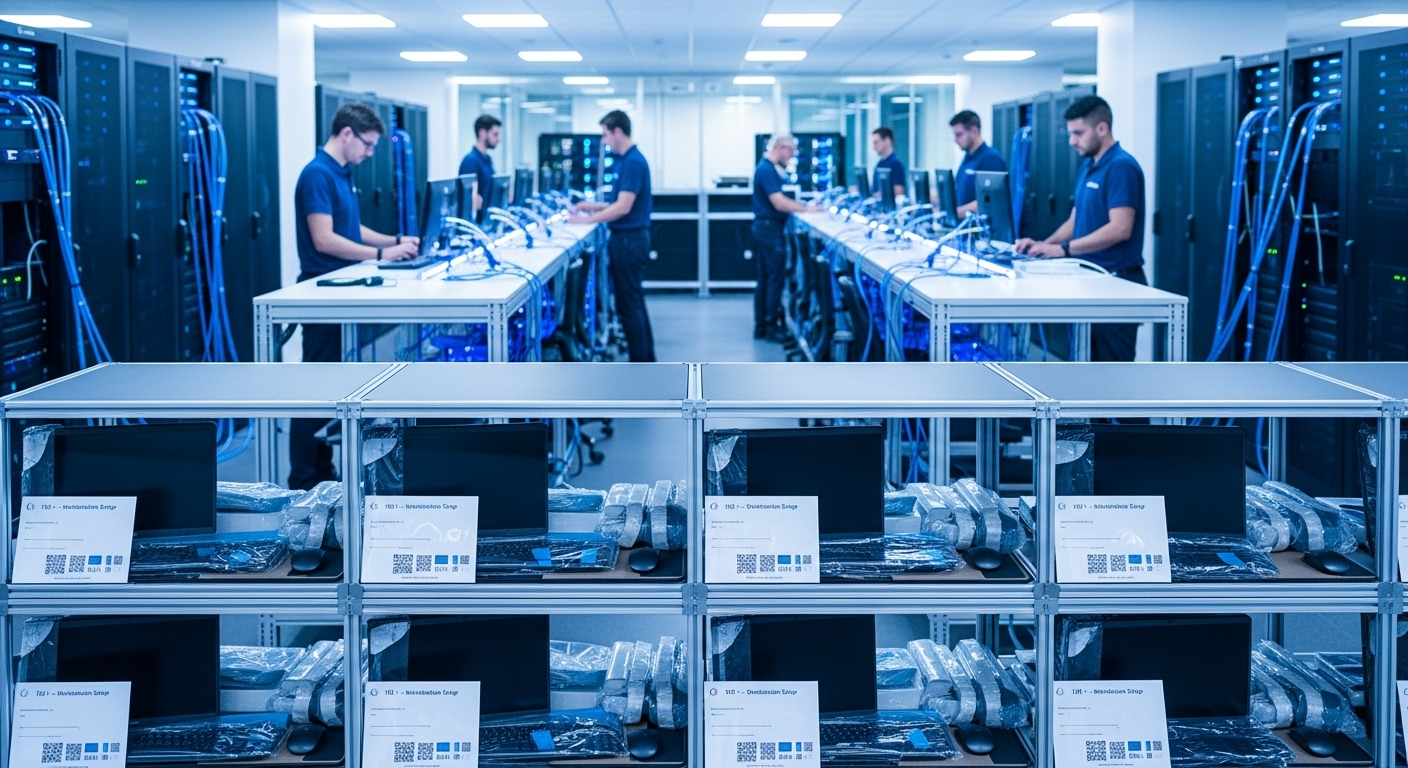In the wake of a global shift in work culture, the battle for top talent has never been more intense. Companies are realizing that competitive salaries and traditional benefits are no longer enough. The new frontier in talent acquisition and retention is the workplace itself. No longer just a physical location for work, the office has evolved into a strategic asset—a powerful tool for embodying company culture, fostering innovation, and creating an experience that attracts and keeps the best and brightest. This transformation is driven by a fundamental change in employee expectations; professionals now seek flexibility, purpose, and a supportive environment that prioritizes their well-being. In this post, we will explore tangible workplace innovation examples, from tech-enabled smart buildings to amenity-rich environments, and examine how modern commercial real estate platforms are the key to unlocking these powerful talent magnets. We’ll delve into how strategic real estate decisions are becoming synonymous with strategic talent management, ultimately turning a lease agreement into a foundation for lasting employee loyalty.
The office as a destination: redefining the purpose of commercial space
The fundamental question for business leaders today is no longer ‘how do we get people back to the office?’ but rather ‘how do we create an office people want to come to?’. The answer lies in transforming the workplace from a place of obligation into a destination of choice. This paradigm shift is at the heart of modern workplace innovation. The concept of Activity-Based Working (ABW) is a prime example, where the environment is designed to support a variety of tasks. Instead of assigned desks, employees have access to a rich ecosystem of spaces: quiet zones for focused concentration, vibrant collaborative hubs with whiteboards and digital tools for brainstorming, comfortable lounges for informal meetings, and private pods for confidential calls. This flexibility empowers employees to choose the setting that best suits their task and mood, fostering a sense of autonomy and trust that is highly valued. Commercial real estate is no longer about maximizing headcount per square foot; it’s about curating a diverse and engaging experience. Companies are strategically designing spaces that intentionally spark interaction and build community—elements that were sorely missed during periods of remote work. The ‘destination office’ serves as a cultural anchor, a physical manifestation of a company’s values and a central hub for mentorship, collaboration, and social connection that simply cannot be replicated through a screen.
Tech-enabled experiences: smart buildings and the connected employee
Technology is the engine driving the modern, innovative workplace. Smart building technology has moved from a futuristic concept to a practical necessity for creating a seamless and responsive employee experience. Imagine an office that anticipates your needs. This is becoming a reality through the Internet of Things (IoT). Integrated sensors can monitor space utilization in real-time, providing valuable data that helps companies optimize their layout and eliminate underused areas. For employees, this technology translates into tangible benefits. Smart desk and room booking systems, accessible via a mobile app, eliminate the friction of finding a place to work. You can book a desk near your team, reserve a conference room with the right AV equipment, and even pre-order your coffee from the building’s cafe, all before you leave home. This connected experience extends to personalized environmental controls, allowing individuals or teams to adjust lighting and temperature in their zones, enhancing comfort and productivity. Moreover, these platforms can integrate with other building services, such as visitor management, security access, and even parking. This level of integration creates a frictionless environment where the building itself works to support the employee, reducing minor daily frustrations and allowing them to focus on what matters. For a potential hire, a tour of a tech-enabled office sends a powerful message: this is a forward-thinking company that invests in its people and their experience.
Beyond the ping-pong table: the new era of workplace amenities
For years, workplace amenities were synonymous with superficial perks like ping-pong tables and free snacks. While these can contribute to a fun atmosphere, the new era of amenities focuses on substantive offerings that support an employee’s holistic well-being. Today’s top talent is looking for an employer who genuinely invests in their physical and mental health, professional growth, and work-life integration. This has led to the rise of amenities with tangible value. On-site wellness centers offering fitness classes, yoga sessions, and mindfulness rooms are becoming increasingly common. High-quality, healthy food options are replacing sugary snacks and fast food. Some innovative workplaces even offer services like on-site childcare, concierge services to handle personal errands, or dedicated spaces for professional development and learning. These amenities demonstrate a deep understanding of the pressures modern employees face. They are designed to reduce stress, improve health, and give back the one resource everyone needs more of: time. When a company provides resources that genuinely make an employee’s life easier and healthier, it fosters a profound sense of being cared for. This emotional connection is a powerful driver of loyalty and retention, far exceeding the fleeting appeal of a novelty perk. It signals that the organization sees its employees not just as workers, but as whole people, and is committed to supporting them comprehensively.
Green is the new black: sustainability and biophilic design as talent magnets
In an era of heightened social and environmental consciousness, a company’s values are a critical factor for attracting and retaining talent, particularly among younger generations. An innovative workplace is increasingly a sustainable one. Demonstrating a commitment to environmental responsibility through green building practices is a powerful statement. Certifications like LEED (Leadership in Energy and Environmental Design) are no longer just about operational efficiency; they are a badge of honor that signals a company’s commitment to the planet. This resonates deeply with employees who want to work for organizations that align with their personal values. Closely related to sustainability is the concept of biophilic design—the practice of connecting people and nature within our built environments. This goes beyond placing a few potted plants around the office. It involves maximizing natural light, incorporating natural materials like wood and stone, installing living green walls, and providing direct views of nature. The benefits are well-documented: biophilic design has been shown to reduce stress, improve cognitive function, and enhance creativity. For employees, working in a space that feels bright, airy, and connected to the natural world significantly boosts their daily mood and well-being. For employers, it’s a strategic investment that pays dividends in productivity, reduced absenteeism, and a distinct competitive advantage in the talent market.
Case in point: real-world examples of innovation in action
Theory is valuable, but seeing innovation in practice provides a clear blueprint for success. Tech giants have often led the way. For example, Salesforce Tower in San Francisco dedicates its top floors, the ‘Ohana Floors,’ as open, flexible spaces for employees, customers, and even non-profits to use, fostering a deep sense of community and purpose. Google has long used data-driven design to create campuses that cater to every work style, with an immense variety of spaces that encourage both deep focus and spontaneous interaction. But innovation isn’t limited to billion-dollar corporations. Consider a mid-sized marketing agency that redesigns its office post-pandemic. Instead of rows of desks, it creates ‘neighborhoods’ for different teams, each with a mix of workstations, soft seating areas, and a dedicated project room. They install a high-tech boardroom with immersive video conferencing to seamlessly connect remote and in-person attendees. They also convert a corner of the office into a ‘library’ with a strict no-talking, no-devices policy for heads-down work. By partnering with a local cafe, they offer barista-made coffee, turning the kitchen into a social hub. This thoughtful redesign, focused on purpose-driven spaces, directly addresses the reasons employees want to come to an office: to collaborate, focus, and connect with colleagues in a way that remote work cannot replicate. These examples prove that any company, regardless of size, can leverage its physical space to create a powerful and attractive employee experience.
The role of the modern commercial real estate platform
Finding and managing these innovative workspaces would be a monumental task without the evolution of commercial real estate (CRE) platforms. Gone are the days of static online listings. Today’s leading CRE platforms are sophisticated technology ecosystems that empower companies to execute complex real estate strategies with unprecedented agility and insight. These platforms provide data-rich environments where decision-makers can analyze market trends, compare building amenities, and take immersive 3D virtual tours without leaving their desks. More importantly, they offer access to a wider range of solutions beyond the traditional long-term lease. Companies can now easily find and secure flexible office spaces, on-demand meeting rooms, and co-working memberships through a single interface. This allows businesses to build a hybrid real estate portfolio that can scale and adapt to changing needs, supporting a distributed workforce. Furthermore, many platforms now incorporate workplace management tools. Once a space is secured, these tools can help manage desk booking, analyze space utilization patterns, and gather employee feedback. By providing both the marketplace to find innovative spaces and the technology to manage them effectively, modern CRE platforms have become indispensable partners. They bridge the gap between a company’s vision for an ideal workplace and the practical steps required to bring it to life, making them a critical component in the strategy for winning the war for talent.
In conclusion, the conversation around the workplace has fundamentally and permanently shifted. The office is no longer a simple operational cost but a critical investment in a company’s most valuable asset: its people. The examples of workplace innovation—from activity-based working and smart building integration to wellness-focused amenities and sustainable design—are not isolated trends but components of a holistic strategy aimed at creating an unparalleled employee experience. This strategy recognizes that the physical environment has a direct and profound impact on culture, collaboration, productivity, and ultimately, an employee’s decision to join or stay with a company. As we have seen, this is not just the domain of tech giants; organizations of all sizes can implement these principles to create a ‘destination’ workplace. The evolution of commercial real estate platforms provides the necessary tools and flexibility to make these ambitious visions a reality. By thoughtfully and strategically investing in their workspaces, companies are not just leasing square footage; they are building a foundation for loyalty, fostering a culture of innovation, and securing their competitive edge in the ongoing war for talent.





